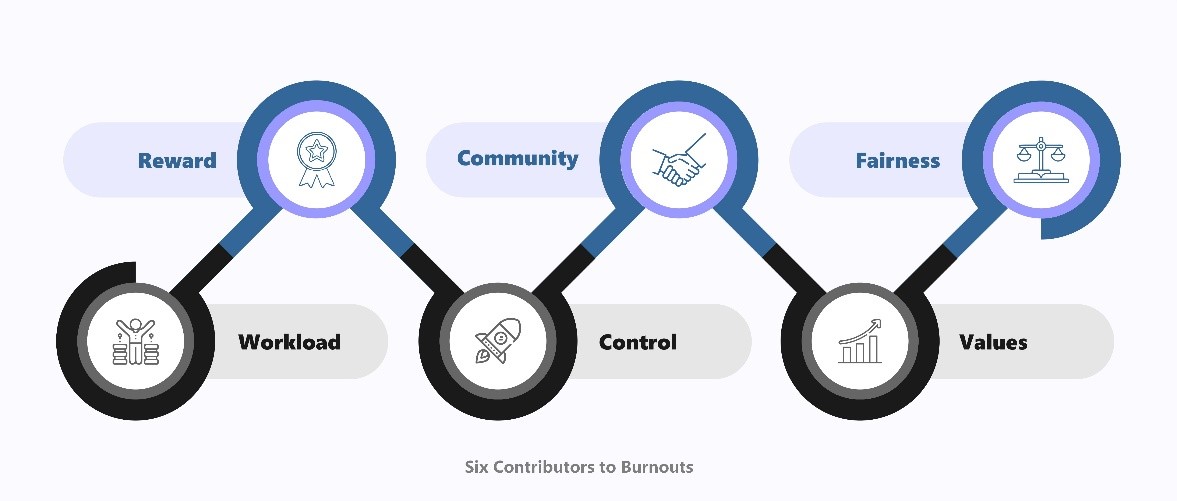
For the past seven years, Susan Wu has been the rock of her organization. Talent development hasn’t been just work for her. In helping people reach their goals, she found her own goal met. But, her second child changed things. And then dawned COVID-19. The emotional weight of abrupt change, coupled with the pressing load of existing and new responsibilities, setting up and rolling the immediate remote office and managing home without support became untenable.
Finding a balance became harder.
Teams catch their leaders’ mood faster than the flu. Susan’s team has been experiencing confusion and discomfort for a while. She can sense it and has also been questioning if she is the right person for this role. And while she does so, there’s the draft of her resignation letter peeking at her from her desktop window. She ponders if her place will better suit someone else.
Susan is not an anomaly.
While work from home has offered a respite from the commute, formal structures in offices, and regular daily schedule, it has cut the mental break from work and added to an extant digital overwhelm.
In their study, Jeanne Bell et al said 34 percent of senior leaders anticipate leaving their current job within less than two years.
That was before COVID-19 hit.
The latest June report from job posting site Monster says two-thirds of employees are burnt out – 10 percent up from May. The number has been steadily rising and is higher for leaders.
So, what should leaders do when they feel burnt out? Is quitting the right decision? We analyze this and more here.
Here’s how medical science defines a burnout:
Neuroscientists say that burnout enlarges the amygdala, the part of the brain that regulates emotional reactions.
In their lexicon, ‘burnout’ was coined by psychologist Herbert Freudenberger, and it is said to lead to “the loss of motivation, growing sense of emotional depletion, and cynicism.”
These are broad divisions, but different people respond to burnouts differently.
Maslach et al have defined “three key stress responses: an overwhelming sense of exhaustion, feelings of cynicism and detachment, and a sense of professional ineffectiveness and lack of accomplishment.”
So, even if you have been a high-achieving leader, you still may feel inadequate because you are burnt out.
Some jobs are more at-risk. Maximum burnout is prevalent among professional caretaking and service-related roles. Talent leaders, being the pivot of employee connections, handle intense stress in times of overhauls like COVID-19. Handling tight deadlines, dealing with rude or disgruntled employees, and the emotional toll of professional caretaking – all add their bit.
Burnt-out professionals in the service sector “reported feelings of profound emotional exhaustion, negativity directed at clients and patients, and a crisis in feelings of professional competence,” said Christina Maslach, professor emerita at the University of California.
“One sign is that a leader will find themselves struggling to muster their internal enthusiasm, energy or motivation for aspects of their work that they previously enjoyed a great deal. Because they are committed, achievement-oriented hard workers, it simply does not occur to them that burnout could be the cause of this internal change. They are more likely to worry that there is something more generally wrong with them or with their career progression.” – Nancy Scheel
Maslach identified six components that contribute to burnout: workload, reward, control, community, values, and fairness. All six do not need to contribute together. When any one of these areas are mismatched, leaders feel burnt out. These six factors also contribute to eroding passion among leaders.

Maslach also says that these six factors and “not too much to do” are responsible for burnouts.
A less-obvious case is when the talent leader is strongly motivated to achieve goals but steadily receives resistance from the organization.
It could be a pushback from the top, the cultural DNA, or a specific department. “When a capable, driven leader feels that their hands are tied – that they’ve efforted over and over, with multiple approaches, to no avail – that leader will likely experience burnout,” says Nancy Scheel.
A few weeks following the launch of the Huffington Post, Arianna Huffington, the company’s president and editor-in-chief, collapsed from exhaustion. Here’s what she told Oprah Winfrey:
“I hit my head on my desk, broke my cheekbone, got four stitches on my right eye. I was very lucky I didn’t lose my eye.”
While this was extreme, here’s another common one.
“I find myself working all the time, even when I should be getting ready for bed. I feel an obligation to get everything done, even if it’s to the detriment of my own mental health.” – Alana Acosta-Lahullier
“When your energy levels are so low that you feel like you need the entire weekend (or more!) to recover, it’s a clear warning sign that you’re headed for – or experiencing – burnout. While putting aside self-care because you ‘don’t have the time’ may seem heroic or selfless, it’s actually the opposite. Taking good care of yourself actually serves you, and those around you, because it allows you to perform at your best.
When you’re in burnout mode, you lose that perspective and do whatever it takes to power through your days. Exhausted, you rob yourself of the opportunity to relax, recharge and rejuvenate, and the downward spiral continues. Fantasizing about leaving your job – especially one that you used to find fulfilling – or losing interest in activities you used to enjoy could be other signs that you’re overwhelmed and on the fast track to burnout. Don’t ignore or underestimate them!”- says Jody Michael.
Here’s what we suggest:
Most importantly, don’t quit yet!

CredBadge™ is a proprietary, secure, digital badging platform that provides for seamless authentication and verification of credentials across digital media worldwide.
CredBadge™ powered credentials ensure that professionals can showcase and verify their qualifications and credentials across all digital platforms, and at any time, across the planet.

Please enter the License Number/Unique Credential Code of the certificant. Results will be displayed if the person holds an active credential from TMI.